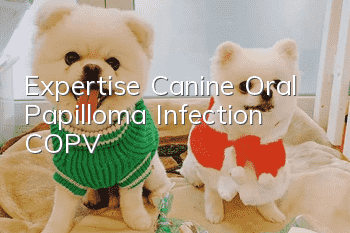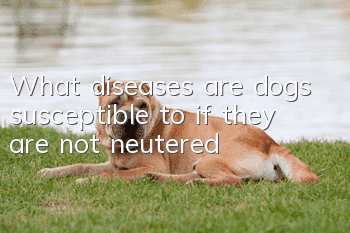Expertise: Canine Oral Papilloma Infection (COPV)

Overview
Canine oral papilloma infection (COPV) is a large DNA virus that infects dogs. Cows and cats have nipples. COPY Benign metastatic tumors in the head, mouth, and eyelids Dogs 2 years of age or younger are more susceptible. The virus is neither gender nor species specific. Multiple papillomas rarely become cancerous.
Etiology
Canine oral papilloma infection is a benign skin and mucosal tumor caused by infectious polypapillary viruses. There are large, multiple papillomas (or warts) around the mouth. The virus is also contagious.
Pathophysiology
Tumors caused by COPV are caused by the virus invading basal cells, resulting in acanthosis and hyperkeratosis. The incubation period after infection is 4 to 8 weeks. Tumors can persist for 1 to 5 months and then disappear on their own.
Clinical symptoms
The diagnosis of infectious oral papilloma infection is based on physical examination and clinical history. The disease is most susceptible to young dogs. The most susceptible tissues are the edges of the lips and tongue. The less susceptible parts are the palate, pharynx, epiglottis and esophagus. Individual dogs may develop multiple papillomas on unilateral or bilateral eyelid margins. Other symptoms include bad breath, excessive saliva, mild bleeding from infected tissue, and discomfort. Scratches and bites from toes and teeth encourage the spread of tumors in and around the mouth. Secondary mouth sores and infections can develop later. Dogs with dense or large tumors may have pain or difficulty eating, and may later become malnourished.
Differential diagnosis
This disease should be distinguished from benign and malignant tumors, such as gingival tumors, fibromas, hemangioma, hemangiopericytoma and histiocytoma.
Diagnosis
A biopsy of a benign tumor and the degree of tumor enlargement can confirm the diagnosis.
Treatment/Prognosis
In most cases, tumors caused by this virus do not require treatment. When the tumor appears 1 to 5 months later, it will disappear on its own. It's not yet clear why these tumors regress on their own or how they spread. Surgical resection, cryosurgery, and electrosurgery can be used to remove large oral tumors. There are reports that 5 to 15 small tumors will undergo spontaneous regression, which also shortens the course of the disease. Systemic and chemical treatments are not very effective in dogs. The prognosis for untreated dogs is very good.
Prevention
There are currently no approved biologics for the prevention of oral papilloma infections in dogs.
Public health
COPV only occurs in dogs and is not harmful to human health.
- Dog bleeding from one side of nose
- What are the symptoms of dogs getting angry?
- What’s wrong with a dog’s red eyes?
- How to train a golden retriever to search and rescue? Methods and techniques for training golden retrievers!
- How to treat Yorkie skin disease?
- Five things to note when raising a dog in summer
- What are the key points of raising Doberman Pinscher?
- How to prevent parasites in dogs
- The most powerful basic knowledge of raising a dog, essential information for raising a dog
- Can Teddy dogs eat cooked chestnuts?



